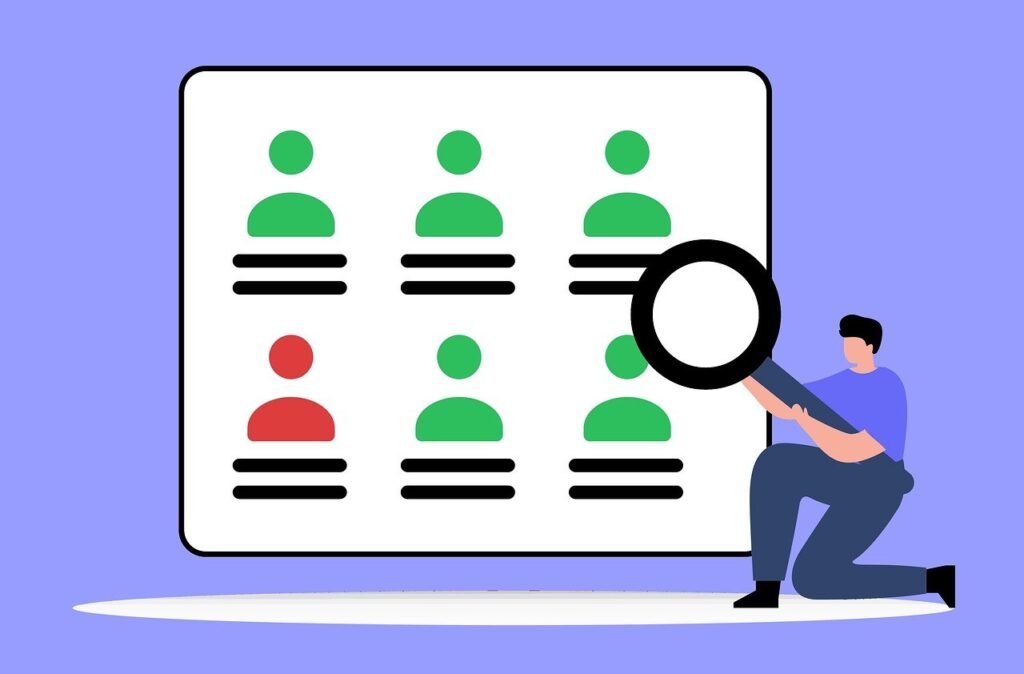This Article has been revised, edited and added to, by Poulomi Chakraborty.
Imagine walking into your favorite coffee shop. The barista knows your name, remembers your usual order, and even asks how your recent vacation went. This personal touch makes you feel valued and keeps you coming back. Now, imagine if your content marketing could replicate that same sense of personal connection. This is the magic of personalization.
In today’s digital age, consumers are bombarded with a constant stream of content. To stand out, brands must go beyond generic messages and create tailored experiences that resonate with individual audiences. Personalization in content marketing isn’t just a trend; it’s a necessity. It’s about delivering the right message to the right person at the right time, making your audience feel understood and valued.
In this guide, we’ll explore the power of personalization in content marketing, diving into strategies, tools, and best practices to get it right. From understanding your audience to leveraging data and technology, we’ll cover everything you need to create personalized content that drives engagement and conversions.
Understanding Personalization

Personalization in content marketing means creating content that is specifically tailored to individual users based on their preferences, behavior, and demographics. It’s about moving away from a one-size-fits-all approach to a more targeted strategy that speaks directly to each person.
The Evolution of Personalization
Personalization has come a long way from simply addressing customers by their first names in emails. Today, it involves sophisticated techniques that utilize data analytics, artificial intelligence, and machine learning to predict user behavior and preferences.
Brands can now create highly personalized experiences across various touchpoints, including websites, social media, and email campaigns.
Why Personalization Matters
Personalization is crucial because it enhances the user experience, builds stronger relationships, and drives better results. When done right, personalized content can increase engagement, improve customer loyalty, and boost conversion rates. Here are some key benefits:
- Increased Engagement: Personalized content grabs attention and keeps users interested. When people see content that is relevant to them, they are more likely to engage with it.
- Improved Customer Loyalty: Personalization makes customers feel valued and understood, which fosters loyalty. When customers feel a personal connection with a brand, they are more likely to return and recommend it to others.
- Higher Conversion Rates: Personalized content can guide users through the buyer’s journey more effectively, leading to higher conversion rates. By providing relevant information at each stage, you can nurture leads and drive sales.
The Mechanics of Personalization
To effectively personalize your content, you need to understand the mechanics behind it. This involves gathering data, segmenting your audience, and using the right tools and techniques.
Gathering Data
Data is the backbone of personalization. The more you know about your audience, the better you can tailor your content to meet their needs. There are several ways to gather data:
- Behavioral Data: This includes information about how users interact with your content, such as pages visited, time spent on site, and clicks.
- Demographic Data: This includes age, gender, location, and other demographic information that can help you understand your audience better.
- Psychographic Data: This includes information about users’ interests, values, and lifestyles, which can provide deeper insights into their preferences.
Segmenting Your Audience
Once you have gathered data, the next step is to segment your audience. Segmentation involves dividing your audience into smaller groups based on shared characteristics. This allows you to create more targeted and relevant content for each group.
For example, you might segment your audience based on:
- Demographics: Age, gender, income, education level, etc.
- Behavior: Past purchases, browsing history, engagement level, etc.
- Interests: Hobbies, preferences, content consumption patterns, etc.
Tools and Techniques
There are various tools and techniques available to help you personalize your content. Some of the most effective include:
- Customer Relationship Management (CRM) Systems: These systems help you manage customer data and interactions, allowing you to create personalized experiences based on user behavior and preferences.
- Marketing Automation Platforms: These platforms automate various marketing tasks, such as email campaigns and social media posts, and allow you to deliver personalized content at scale.
- Artificial Intelligence and Machine Learning: AI and ML can analyze large amounts of data to predict user behavior and preferences, enabling you to create highly personalized content.
Now that we have a foundational understanding of personalization and its importance, let’s delve deeper into the strategies and best practices to implement it effectively.
Strategies for Effective Personalization

Understanding the power of personalization is just the beginning. To harness its full potential, you need to implement effective strategies that align with your business goals and audience needs. This section explores various approaches to achieve successful personalization in your content marketing efforts.
Creating Detailed Buyer Personas
The cornerstone of effective personalization is having a deep understanding of your audience. Creating detailed buyer personas helps you achieve this by providing a clear picture of your ideal customers.
These personas should include information about demographics, behavior, preferences, and pain points. By knowing who your audience is, you can tailor your content to address their specific needs and interests.
To develop comprehensive buyer personas, start by gathering data from various sources such as customer surveys, interviews, and analytics. Look for common characteristics and trends among your customers.
Consider their age, gender, location, job title, and income level, as well as their hobbies, values, and lifestyle choices. Understanding their challenges and goals will enable you to create content that resonates with them on a personal level.
Leveraging Behavioral Insights
Behavioral data provides valuable insights into how your audience interacts with your content. By analyzing user behavior, you can identify patterns and preferences that inform your personalization efforts. For example, tracking which pages users visit, how long they stay, and what actions they take can reveal what interests them most.
Use these insights to deliver content that aligns with their behavior. If a user frequently visits your blog to read about a specific topic, consider offering them more content on that subject. Tailor your email campaigns based on their browsing history and previous interactions. This approach ensures that your content is always relevant and engaging, increasing the likelihood of conversion.
Utilizing Data-Driven Content
Data-driven content is created based on the analysis of user data and trends. By leveraging data, you can identify what type of content performs best with your audience and use this information to inform your content strategy. This approach allows you to create highly targeted content that addresses the specific needs and interests of your audience.
To implement data-driven content, start by analyzing your existing content and identifying which pieces have the highest engagement rates. Look for trends in the types of content that resonate with your audience, such as blog posts, videos, or infographics.
Use this information to create new content that aligns with these trends. Additionally, consider using A/B testing to experiment with different content formats and messaging to see what works best.
Personalizing Across Multiple Channels
Effective personalization requires a multi-channel approach. Your audience interacts with your brand across various platforms, including your website, social media, email, and mobile apps. To create a seamless and consistent experience, you need to personalize content across all these touchpoints.
Start by mapping out your customer journey and identifying key touchpoints where personalization can make a difference. For your website, use dynamic content that changes based on user behavior and preferences.
On social media, tailor your posts to target specific audience segments. For email campaigns, use personalized subject lines and content that speak directly to the recipient’s interests.
Implementing Real-Time Personalization
Real-time personalization involves delivering content that adapts instantly based on user behavior and context. This approach ensures that your audience always receives the most relevant content, enhancing their overall experience.
Real-time personalization can be achieved through the use of advanced technologies such as artificial intelligence and machine learning.
To implement real-time personalization, start by integrating AI-powered tools into your content management system. These tools can analyze user behavior in real-time and deliver personalized content based on their actions.
For example, if a user is browsing a product category on your website, you can display related products or personalized recommendations. Similarly, if a user abandons their shopping cart, you can send a personalized email with a special offer to encourage them to complete their purchase.
Measuring and Optimizing Personalization Efforts
To ensure the success of your personalization efforts, it’s essential to measure and optimize your strategies continuously. Track key performance indicators (KPIs) such as engagement rates, conversion rates, and customer satisfaction to gauge the effectiveness of your personalized content.
Regularly analyze your data to identify areas for improvement and make necessary adjustments. Experiment with different personalization techniques and content formats to see what works best for your audience. By continually refining your approach, you can maximize the impact of your personalization efforts and achieve better results.
Personalization Techniques for Different Content Types
 content require different strategies to effectively engage your audience. This section explores various personalization techniques tailored to specific content formats, ensuring your message resonates across all platforms.” class=”wp-image-47953″/>
content require different strategies to effectively engage your audience. This section explores various personalization techniques tailored to specific content formats, ensuring your message resonates across all platforms.” class=”wp-image-47953″/>Personalization isn’t a one-size-fits-all approach. Different types of content require different strategies to effectively engage your audience. This section explores various personalization techniques tailored to specific content formats, ensuring your message resonates across all platforms.
Personalized Emails
Emails are a powerful tool for delivering personalized content directly to your audience. To maximize their impact, start by segmenting your email list based on demographics, behavior, and preferences. Use this segmentation to craft personalized messages that address the unique needs and interests of each group.
When composing personalized emails, use the recipient’s name in the subject line and greeting to create an immediate connection. Tailor the content to reflect their past interactions with your brand.
For example, if a customer recently purchased a product, send them recommendations for complementary items or tips on how to use their purchase effectively.
Additionally, consider implementing dynamic content within your emails. Dynamic content allows different parts of the email to change based on the recipient’s data.
This can include personalized product recommendations, location-specific offers, or tailored content based on their browsing history. By making each email relevant to the recipient, you increase the likelihood of engagement and conversion.
Customized Website Experiences
Your website is often the first point of contact with potential customers, making it a crucial platform for personalization. Start by using data analytics to understand how users interact with your site. Identify key behaviors, such as frequently visited pages, time spent on site, and conversion paths.
Implement dynamic content that changes based on user behavior. For example, if a visitor has shown interest in a particular product category, display related products or special offers on their next visit. Use personalized recommendations to guide users toward relevant content, helping them find what they need more quickly.
Another effective technique is to create personalized landing pages. These pages can be tailored to different audience segments, providing relevant information and calls to action that resonate with each group.
For instance, a landing page for first-time visitors might highlight your brand’s unique value proposition, while a page for returning customers could focus on loyalty rewards or new arrivals.
Tailored Social Media Content
Social media platforms offer unique opportunities for personalization. By leveraging user data and platform-specific tools, you can create content that speaks directly to your audience.
Start by analyzing your followers’ demographics, interests, and engagement patterns. Use this information to craft posts that resonate with different segments of your audience.
Consider using personalized ads to reach specific groups. Social media platforms like Facebook and Instagram allow you to create highly targeted ads based on user data. Tailor your ad copy and visuals to address the needs and interests of each segment, increasing the chances of engagement and conversion.
Additionally, engage with your audience on a personal level. Respond to comments and messages with personalized replies, showing that you value their input. Host live sessions or Q&A events to interact directly with your followers, addressing their questions and concerns in real-time.
Interactive and Engaging Content
Interactive content, such as quizzes, polls, and calculators, offers a unique way to personalize the user experience. By allowing users to input their preferences and data, you can provide personalized results and recommendations that are highly relevant to them.
For example, a fitness brand could create a quiz to help users determine their ideal workout plan. Based on their answers, the quiz provides personalized workout recommendations and tips. This not only engages users but also provides valuable insights into their preferences and needs.
Consider using interactive content to gather data and refine your personalization strategies further. By analyzing the responses and engagement patterns, you can gain deeper insights into your audience and tailor your content accordingly.
Video Personalization
Video content is a powerful medium for personalization. Personalized videos can create a more engaging and memorable experience for your audience. Start by using data to understand your viewers’ preferences and behavior. Tailor your video content to address their specific needs and interests.
Consider incorporating personalized elements into your videos. For example, use dynamic text overlays to address viewers by their names or reference their recent interactions with your brand. Personalized calls to action can guide viewers toward relevant next steps, increasing the chances of conversion.
Additionally, use video analytics to track viewer engagement and optimize your content. Identify which parts of your videos resonate most with your audience and adjust your strategy accordingly. By continually refining your video content, you can create a more personalized and impactful viewing experience.

Overcoming Challenges in Personalization
While personalization offers significant benefits, it also comes with its own set of challenges. Successfully implementing personalized content requires navigating these obstacles effectively. This section explores common challenges and provides strategies to overcome them.
Data Privacy and Security
One of the biggest concerns in personalization is ensuring data privacy and security. Consumers are increasingly aware of how their data is collected and used, and they expect brands to handle their information responsibly. Failing to protect user data can lead to a loss of trust and legal consequences.
To address this challenge, prioritize transparency and consent. Clearly communicate to your audience how their data will be used and obtain explicit consent before collecting personal information. Implement robust data security measures to protect against breaches and unauthorized access. Regularly review and update your privacy policies to comply with the latest regulations, such as GDPR and CCPA.
Building trust through transparent data practices not only safeguards your brand but also encourages users to share their information willingly, enabling more effective personalization.
Balancing Personalization and Privacy
Finding the right balance between personalization and privacy can be tricky. Over-personalization can feel intrusive and make users uncomfortable, while under-personalization can result in generic and ineffective content.
To strike the right balance, focus on relevant and non-intrusive personalization. Use data to understand your audience’s preferences and tailor content accordingly, without crossing the line into overly personal territory. Avoid using sensitive information unless absolutely necessary and ensure your personalization efforts enhance the user experience rather than detract from it.
Regularly seek feedback from your audience to understand their comfort levels with personalization. This can help you adjust your strategies to meet their expectations and preferences.
Integrating Data from Multiple Sources
Effective personalization requires integrating data from various sources, such as CRM systems, analytics platforms, and social media channels. However, consolidating and managing this data can be challenging, especially when dealing with large volumes of information.
To overcome this challenge, invest in a unified data management platform that centralizes your data sources. This platform should allow you to integrate, analyze, and manage data from multiple channels seamlessly. By having a single source of truth, you can gain a comprehensive view of your audience and deliver consistent personalized experiences across all touchpoints.
Additionally, ensure your team is trained to use these tools effectively. A well-coordinated approach to data management enables smoother implementation of personalization strategies.
Measuring Personalization Effectiveness
Measuring the effectiveness of personalization efforts can be complex. Unlike traditional marketing metrics, personalization requires tracking specific indicators that reflect user engagement and satisfaction.
Define clear KPIs that align with your personalization goals. These might include metrics such as click-through rates, conversion rates, engagement time, and customer retention. Use advanced analytics tools to track and analyze these metrics, gaining insights into the performance of your personalized content.
Regularly review your data and adjust your strategies based on the findings. Experiment with different personalization techniques and content variations to see what resonates best with your audience. By continuously optimizing your approach, you can enhance the effectiveness of your personalization efforts.
Ensuring Scalability
Personalizing content at scale can be a daunting task, especially for large audiences with diverse needs and preferences. Ensuring scalability without compromising quality is crucial for sustained success.
Automate your personalization processes using advanced tools and technologies. Marketing automation platforms, AI, and machine learning can help you deliver personalized content to large audiences efficiently. These tools can analyze user data in real-time, predict behavior, and tailor content accordingly, allowing you to scale your efforts without manual intervention.
Additionally, segment your audience into manageable groups to streamline personalization. By creating broader segments based on key characteristics, you can deliver relevant content while maintaining a scalable approach.
Aligning Personalization with Brand Voice
Maintaining a consistent brand voice while personalizing content can be challenging. Each piece of personalized content needs to reflect your brand’s identity while addressing individual preferences.
Develop clear brand guidelines that outline your brand’s tone, style, and messaging. Ensure all personalized content aligns with these guidelines, maintaining a cohesive voice across all channels. Training your team to understand and apply these guidelines effectively is essential for consistency.
Use content templates and frameworks that incorporate personalization elements without deviating from your brand’s identity. This ensures each piece of personalized content retains your brand’s unique voice and resonates with your audience.
Ensuring Relevance Over Time
User preferences and behaviors change over time, making it essential to keep your personalized content relevant. Stale or outdated content can negatively impact user engagement and trust.
Regularly update your personalization strategies based on current data and trends. Use predictive analytics to anticipate changes in user behavior and preferences, allowing you to adapt your content accordingly. Continuously monitor the performance of your personalized content and make necessary adjustments to keep it relevant and engaging.
Best Practices for Personalization Success

Achieving effective personalization in content marketing requires adhering to best practices that ensure your efforts are strategic, impactful, and sustainable. This section outlines key practices to help you maximize the benefits of personalization and create meaningful connections with your audience.
Start with Clear Objectives
Before diving into personalization, establish clear objectives that align with your overall marketing goals. Whether you aim to increase engagement, boost conversions, or improve customer loyalty, having specific objectives will guide your personalization efforts and help you measure success.
Define what success looks like for your personalization strategy. This might include specific metrics such as click-through rates, conversion rates, or customer satisfaction scores. Clear objectives ensure that your personalization efforts are focused and measurable, enabling you to track progress and adjust your strategy as needed.
Use High-Quality Data
The foundation of effective personalization is high-quality data. Ensure that the data you collect is accurate, relevant, and up-to-date. This involves regularly cleaning and updating your data to remove any inaccuracies or outdated information.
Implement data validation processes to verify the accuracy of the information you collect. Use reliable sources and tools to gather data, and avoid relying solely on third-party data that may be outdated or inaccurate. By maintaining high-quality data, you can create more precise and effective personalized content.
Segment Your Audience Effectively
Effective segmentation is crucial for delivering personalized content. Use a combination of demographic, behavioral, and psychographic data to create detailed audience segments. This allows you to tailor your content to the specific needs and preferences of each group.
Consider using advanced segmentation techniques such as predictive analytics to identify emerging trends and behaviors within your audience. This enables you to stay ahead of the curve and deliver content that anticipates your audience’s needs. Regularly review and update your segments to ensure they remain relevant and effective.
Create Dynamic Content
Dynamic content is a powerful tool for personalization. It allows you to create content that changes based on user behavior, preferences, and interactions. Use dynamic content on your website, in emails, and across social media to deliver personalized experiences in real-time.
For example, use dynamic content blocks in your emails to display personalized product recommendations based on past purchases. Implement dynamic website elements that change based on the user’s browsing history or location. By leveraging dynamic content, you can create a more engaging and relevant experience for your audience.
Test and Optimize
Continuous testing and optimization are essential for personalization success. Regularly test different personalization strategies, content variations, and delivery methods to identify what works best for your audience. Use A/B testing to compare different approaches and measure their impact.
Analyze the results of your tests and make data-driven decisions to refine your personalization efforts. Look for patterns and trends in the data to identify areas for improvement. By continuously testing and optimizing, you can enhance the effectiveness of your personalization strategy and achieve better results.
Maintain Consistency Across Channels
Consistency is key to a successful personalization strategy. Ensure that your personalized content is consistent across all channels, including your website, social media, email, and mobile apps. This creates a seamless experience for your audience and reinforces your brand identity.
Develop a unified content strategy that outlines your personalization approach for each channel. Use integrated tools and platforms to manage your content and ensure consistency. Train your team to apply your personalization guidelines effectively across all touchpoints.
Monitor and Measure Performance
Regularly monitor the performance of your personalized content to ensure it meets your objectives. Use analytics tools to track key metrics such as engagement rates, conversion rates, and customer satisfaction.
Set up dashboards to visualize your data and gain insights into the effectiveness of your personalization efforts. Use this information to make informed decisions and adjust your strategy as needed. By continuously monitoring and measuring performance, you can ensure that your personalization efforts are driving the desired results.
Foster a Culture of Personalization
Creating a culture of personalization within your organization is essential for long-term success. Encourage your team to embrace personalization as a core component of your marketing strategy. Provide training and resources to help them understand and implement personalization effectively.
Promote collaboration and knowledge-sharing among your team members to foster a collective approach to personalization. Recognize and reward efforts that contribute to successful personalization initiatives. By fostering a culture of personalization, you can ensure that your entire organization is aligned and committed to delivering personalized experiences for your audience.

Our approach to employing UGC begins with soliciting product reviews and personal usage stories from our customers.
They love to share how our supplies have simplified their cleaning processes or the merits of the professional cleaning chemicals we offer. We scale UGC by encouraging video reviews (after all, ‘seeing is believing’), which I, under my pseudonym ‘Danny D’, occasionally comment on, fostering an engaged digital community.
This method, combined with social media contests where we ask users to share photos or videos of our products in use, significantly extends our UGC scope.
We track results by monitoring key KPI’s such as an increase in site engagement, boost in SEO ranking, or uptick in sales of a particular item post UGC exposure.
This feedback is then utilized to optimize both our solicitation process and product offerings, ensuring we are always responsive to our customers’ needs.
Dan Dillon, CEO of CleanItSupply.com
Examples of Successful Personalization in Action
Examining real-world examples of successful personalization can provide valuable insights and inspiration for your own content marketing strategies. In this section, we’ll explore case studies from various industries that have effectively leveraged personalization to achieve impressive results.
Netflix: Personalized Viewing Experiences
Netflix is a prime example of a company that excels in personalization. The streaming giant uses sophisticated algorithms to analyze user behavior and preferences, allowing it to offer highly personalized viewing recommendations. By tracking what users watch, how long they watch, and their interactions with the platform, Netflix can predict what content each user is likely to enjoy.
This level of personalization extends to the user interface as well. The homepage of each Netflix account is customized to highlight shows and movies based on the individual’s viewing history. This personalized approach not only enhances user satisfaction but also increases engagement and retention, as viewers are continually presented with content that aligns with their tastes.
Amazon: Tailored Shopping Experiences
Amazon’s success in e-commerce can be largely attributed to its effective use of personalization. By leveraging vast amounts of customer data, Amazon creates tailored shopping experiences that cater to individual preferences. The platform tracks users’ browsing and purchase history, allowing it to recommend products that are highly relevant to each shopper.
Amazon’s personalized recommendations appear throughout the shopping journey, from the homepage to product pages and marketing emails. This approach has proven to be highly effective in driving sales and customer loyalty, as users are more likely to discover products that meet their needs and interests.
Spotify: Custom Playlists and Discoveries
Spotify has revolutionized the music streaming industry with its personalized user experiences. The platform uses data analytics and machine learning to analyze users’ listening habits and create custom playlists such as Discover Weekly and Daily Mix. These playlists introduce users to new music based on their listening history, preferences, and behavior.
Additionally, Spotify’s personalized recommendations extend to the user interface, where users receive suggestions for albums, artists, and podcasts that align with their interests. This high level of personalization keeps users engaged and encourages them to explore more content on the platform.
Starbucks: Customized Rewards Program

Starbucks has effectively utilized personalization in its rewards program to enhance customer loyalty. Through the Starbucks app, the company collects data on users’ purchase history, preferences, and behavior. This data is then used to deliver personalized offers, discounts, and recommendations to each customer.
For example, the app might offer a discount on a user’s favorite beverage or suggest a new product based on their past purchases. By tailoring rewards and promotions to individual customers, Starbucks creates a more engaging and satisfying experience, encouraging repeat visits and increased spending.
Coca-Cola: Personalized Marketing Campaigns
Coca-Cola’s “Share a Coke” campaign is a notable example of personalization in marketing. By replacing its iconic logo with popular names on its bottles, Coca-Cola created a highly personalized experience that resonated with consumers on a personal level. The campaign encouraged customers to find bottles with their names or the names of friends and family, leading to increased engagement and social sharing.
This personalized approach extended to digital marketing as well. Coca-Cola launched a website where users could create virtual bottles with personalized messages and share them on social media. The success of the “Share a Coke” campaign demonstrated the power of personalization in creating emotional connections and driving consumer engagement.
Sephora: Personalized Beauty Recommendations
Sephora leverages personalization to enhance the shopping experience both online and in-store. The beauty retailer uses data from customer profiles, purchase history, and interactions to offer personalized product recommendations and beauty advice. Sephora’s app and website feature a virtual artist tool that allows users to try on products virtually, providing a personalized and interactive experience.
In addition, Sephora’s Beauty Insider program offers tailored rewards and promotions based on individual preferences and behavior. This level of personalization not only helps customers discover products that suit their needs but also fosters loyalty and repeat purchases.
Nike: Customized Products and Experiences
Nike has embraced personalization through its Nike By You service, which allows customers to customize their own shoes. By offering a range of design options, Nike enables customers to create unique products that reflect their personal style. This personalized approach extends to Nike’s marketing efforts, where the brand uses data to deliver tailored content and recommendations.
Nike’s app also provides personalized workout plans and product suggestions based on user activity and preferences. By combining product customization with personalized experiences, Nike creates a strong connection with its customers and enhances brand loyalty.
These case studies highlight the diverse ways in which personalization can be applied across different industries. By understanding how these successful brands leverage personalization, you can gain valuable insights and ideas to implement in your own content marketing strategy.
Conclusion
Personalization in content marketing is more than just a strategy; it’s a necessity in today’s digital landscape. By understanding your audience deeply and leveraging data to create tailored experiences, you can enhance engagement, build stronger relationships, and drive better results. As demonstrated by successful brands, personalization can transform customer interactions, making them feel valued and understood.
Whether through personalized emails, dynamic website content, or tailored social media interactions, the key is to balance relevance and privacy. Continuously refine your personalization efforts, measure their effectiveness, and stay attuned to your audience’s evolving preferences. Embrace personalization not just as a tactic but as a core component of your marketing approach, ensuring your brand stands out in a crowded marketplace. By doing so, you’ll not only meet but exceed your audience’s expectations, fostering loyalty and driving long-term success.
Read Next
- The Role of Webinars and Live Events in Affiliate Marketing Success
- Affiliate Marketing for the Food and Beverage Industry: Promoting Culinary Delights
- The Power of Influencer Partnerships in Affiliate Marketing
- Affiliate Marketing for the Education Sector: Promoting Courses and Learning Tools
- Affiliate Marketing for Local Businesses: Building Loyalty and Earning Commissions






















Comments are closed.